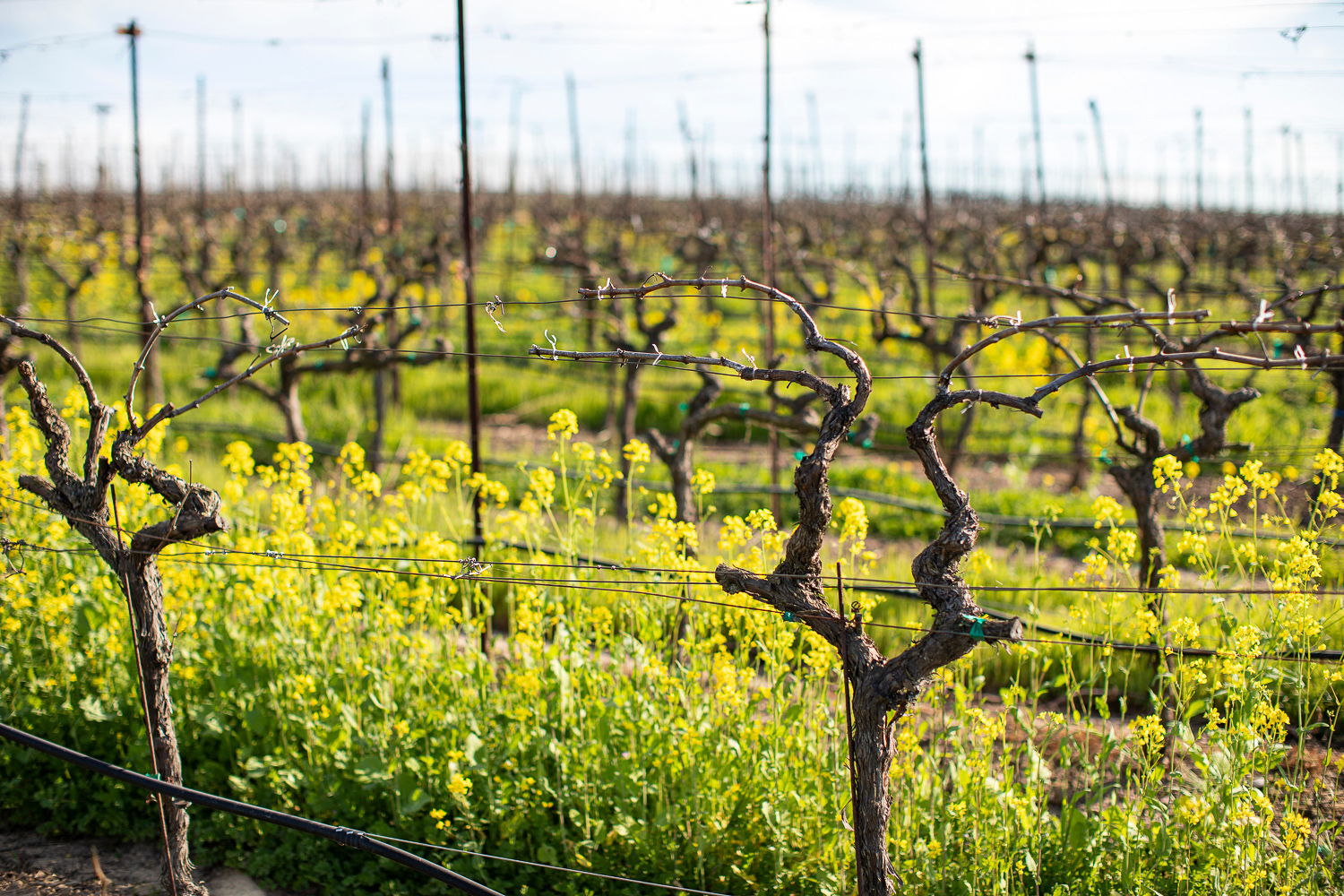We saw the first signs of the 2020 vintage in our Sangiovese Block 2 on Winston Hill on Leap Day. Mild temperatures coupled with no rain has spurred an earlier than average budbreak this year – about two weeks earlier than 2019. February was one of our driest winter months ever with not a single drop of perception on record. Luckily, the forecast for the second week of March calls for some rain.

As for now, most of the vines are still dormant, awaiting spring and the beginning of the growing season. While the vines are still bare, they are flourishing with color. This is mostly thanks to cover crops – the plants that are cultivated between the vines, as a means of enriching the soil. Over the next month, most of it will be mowed down, but right now it’s in full bloom. We plant a wide range of cover crops based on each vineyard’s specific soil type to improve soil health and to provide habitat for beneficial insects. Among our cover crops are legumes, clover, brome, and the most eye-catching of all – mustard, whose brilliant yellow flowers are currently lining the floor of our Lewis Vineyard in Carneros and Benjamin Vineyard in Rutherford.

In our case, mustard is a volunteer cover crop, naturally growing in the mild winter weather. Much like the red poppies of Tuscany, the iconic yellow flowers mark the beginning of a new season in Napa Valley. It thrives January through March and up until bud break, when it is tilled into the soil to provide valuable nutrients and phosphorus to the budding vines.

Our vineyard crew has just wrapped up with winter pruning, a standard grapegrowing practice that helps awaken the vine from dormancy by removing canes from the previous year and allowing for new shoot growth. All in all, it’s looking like the 2020 vintage is off to a good start, and we hope it will continue!








